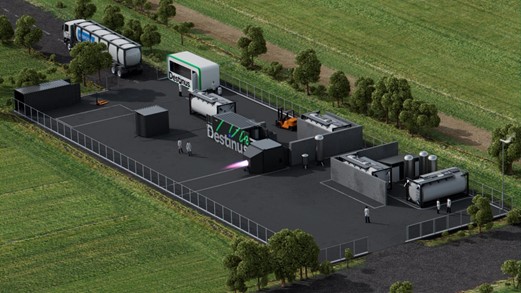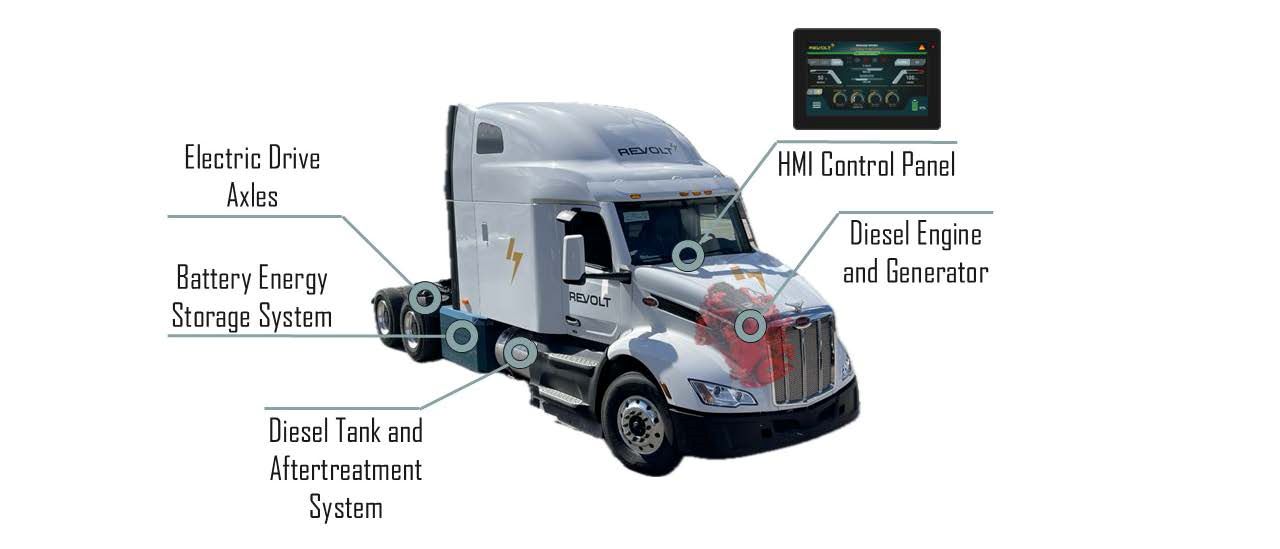Startup Spotlight: Reaching for Mach 5, Powered by Clean Fuel
Imagine a world where a trans-Pacific flight takes 3-4 hours. Impossible, right? Today, it is, with flights lasting at least 10 hours. Unfortunately, even for shorter distances, time is often a barrier to travel.
Destinus, a startup based in Europe, is trying to change how we think about travel. Getting people where they need to go quickly makes travel accessible so that planning long trips isn’t a hassle. Destinus aims to build a passenger airplane that can travel at Mach 5.
Hydrogen as a clean fuel source
With ambitions to break the sound barrier, a key component of Destinus’ novel approach is hydrogen as a new fuel class. Hydrogen is 3x more energy efficient than kerosene. Conventional aircraft run longer with less thrust, and using kerosene or fuel cells works well. However, given the high thrust required to propel a hypersonic engine, hydrogen is the fuel of choice for Destinus. Hydrogen takes up more volume but is lighter and provides nearly three times more energy per unit mass than conventional jet fuel. So, while the aircraft requires a larger tank, it stores more energy per kilogram of fuel.

Destinus’ hydrogen facility for engine testing (Image courtesy of Destinus)
At its headquarters in Switzerland, Destinus has recently begun construction of a new hydrogen facility. Here, they plan to test a new class of hydrogen-powered engines. For now, they are modifying existing engines. This will allow them to run on hydrogen in the combustion chamber and the afterburner. The focus will be on the performance of these engines in high-speed aircraft and the possibility of modifying existing aircraft to run on green hydrogen fuel. Through the use of hydrogen from renewable energy sources, they will be able to provide zero carbon emissions air travel.
A Roadmap to Mach 5
Destinus’ ultimate goal is to bring a hypersonic passenger vehicle to market. Riccardo Bunt, a flight dynamics engineer at Destinus, explains: “Instead of going from zero to a full product in one cycle, we’ve taken an incremental approach to their development”.
“As a startup with many ideas, there’s no clear path to follow. Defining a roadmap was key for us. We took a step-by-step approach and defined those phases.” Riccardo further expands that the roadmap doesn’t just include unmanned prototypes, followed by a passenger aircraft, but also requires developing the technology at each stage.

Destinus’ first and second prototypes. (Image courtesy of Destinus)

Destinus’ hypersonic concept. (Image courtesy of Destinus)
The Destinus team is spread across several locations and works on different development aspects. Switzerland has a hydrogen and testing focus, while Riccardo’s team in Spain has a design, flight dynamics, and overall vehicle performance role. Engine performance is the explicit focus of another team in Germany.
“MathWorks tools come into play when it comes to how all these systems come together,” says Riccardo. He explains how they can simulate the performance of the systems together to evaluate them independently and statically, as well as cohesively and dynamically.
Optimization Through Integration
To build its technology, Destinus developed an in-house system architecture tool that allows input from different teams. For the tank system, for example, the input shows the general properties of the tank, such as how heavy it is, how much fuel it can hold, or how fast it empties. Similarly, they receive inputs from other teams, including structures, aerodynamics, the engine, and cooling systems. Once these modules are built, the team connects the pieces in a Simulink model, defining the architecture of the system and the connections between its components.
This ensures that the inputs and outputs for each block match what is needed and that the aircraft’s performance is studied. With that performance in mind, they can optimize each element. “With MATLAB, we can model any system, from the simplest to the most complex, put the whole architecture together, and evaluate the performance,” Riccardo describes.

Destinus’ Simulink dynamics simulator. (Image courtesy of Destinus)
MathWorks tools give the team versatility without sacrificing performance. Because each component team determines the tools that best meet its needs, MATLAB’s ability to interact with other platforms is critical. Some teams submit a simple Excel data file, while others, such as the GNC team, submit a complete Simulink model with PID controllers for the various control surfaces. MATLAB allows these components to interact seamlessly.
On Moving Quickly
As a startup trying to develop its iterations quickly, MathWorks tools enable the team to be efficient. Riccardo shares an example: “The Aerospace toolbox gets us started much faster. We don’t have to rewrite different functions. Instead, we can get right to work, giving us a head start and simplifying our work.”
Similarly, Simulink helped save much hand-coding time when developing their in-house simulator. Using the six degrees of freedom propagator allowed them to quickly connect to the model, saving time so their engineers could focus on other aspects of the tool. This is critical because it will enable them to propagate the aircraft in an Earth model and get a helpful demonstration output. These flight path simulations are presented to airport authorities who want to see how the system is expected to fly and how it’s built to engineering standards.
While many factors contribute to efficient development, the Destinus team is ultimately the driving force behind the rapid pace of growth. A collaborative and driven environment pushes the team to focus on each step towards their ultimate goal. This hypersonic passenger aircraft will give people the freedom and flexibility they need to see the world.
Riccardo concludes, “This technology will be a game-changer – it’s not a small step of progress; it’s disruptive and will change how we think about travel”.
- カテゴリ:
- Startup Spotlights








コメント
コメントを残すには、ここ をクリックして MathWorks アカウントにサインインするか新しい MathWorks アカウントを作成します。